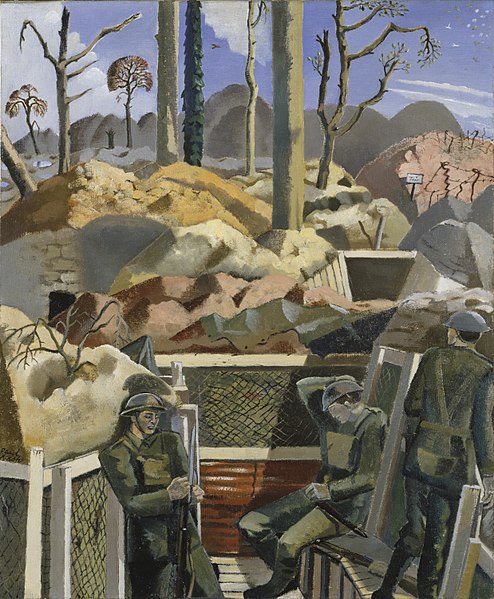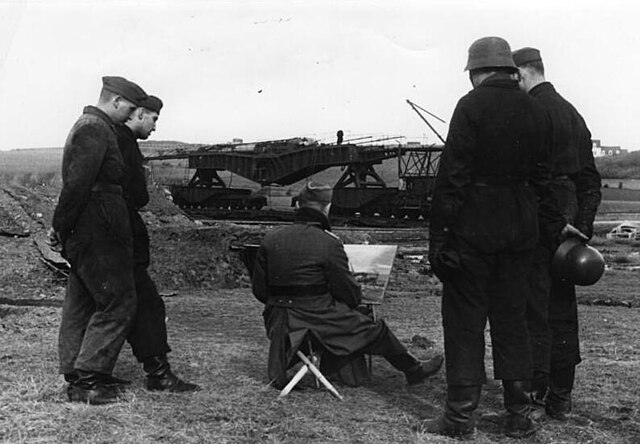British official war artists
British official war artists were a select group of artists who were employed on contract, or commissioned to produce specific works during the First World War, the Second World War and select military actions in the post-war period. Official war artists have been appointed by governments for information or propaganda purposes and to record events on the battlefield; but there are many other types of war artist.
The Kensingtons at Laventie (1915)
Drumcree, The Garvaghy Road July 1997 by David Rowlands, oil on canvas, 91 cm × 61 cm
A war artist is an artist either commissioned by a government or publication, or self-motivated, to document first-hand experience of war in any form of illustrative or depictive record. War artists explore the visual and sensory dimensions of war, often absent in written histories or other accounts of warfare.
Spring in the Trenches, Ridge Wood, 1917 by Paul Nash. Nash was a war artist in both World War I and World War II
A war artist in German-occupied France in 1941
Australians and New Zealanders at Klerksdorp 24 March 1901 by Charles Hammond
The Fall of Nelson, Battle of Trafalgar, 21 October 1805 by Denis Dighton, c. 1825






